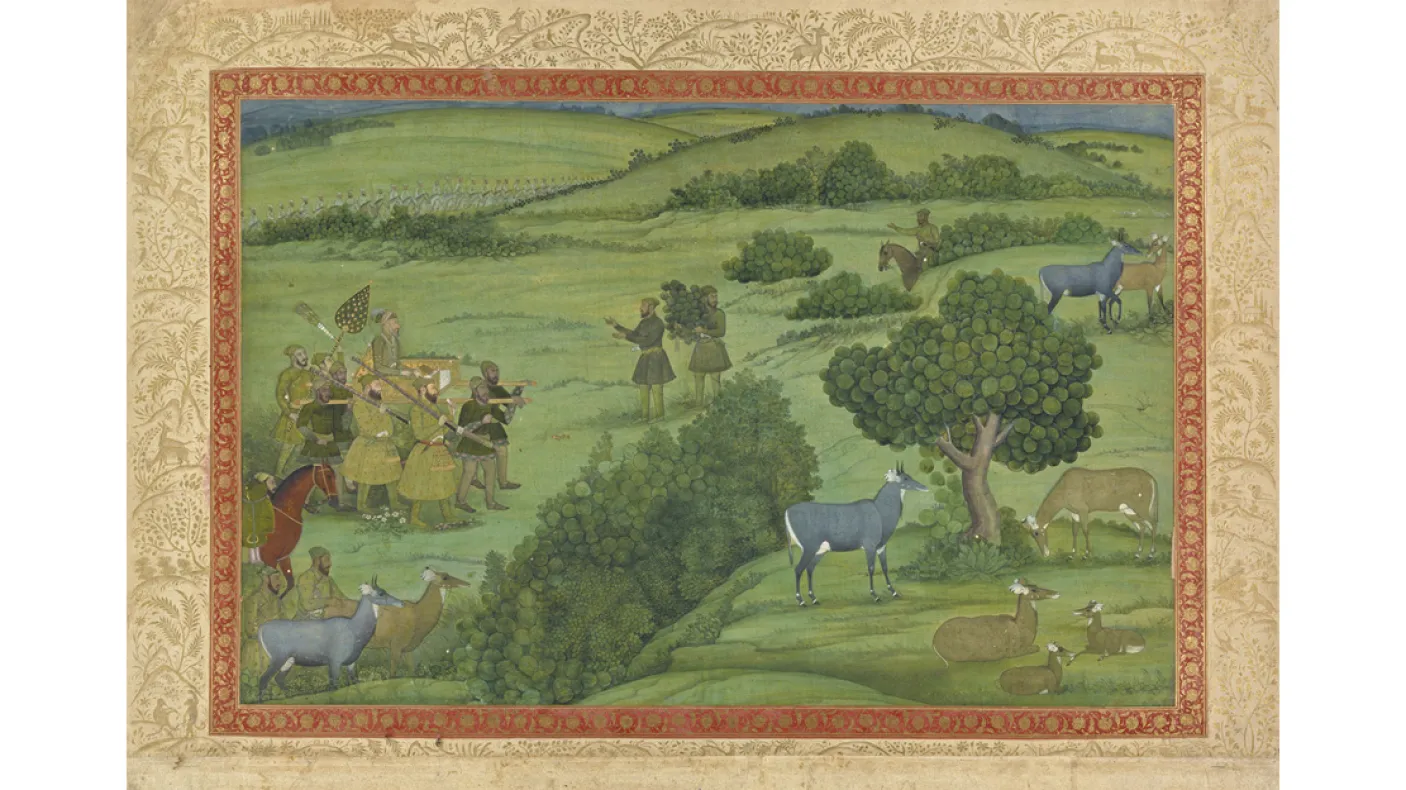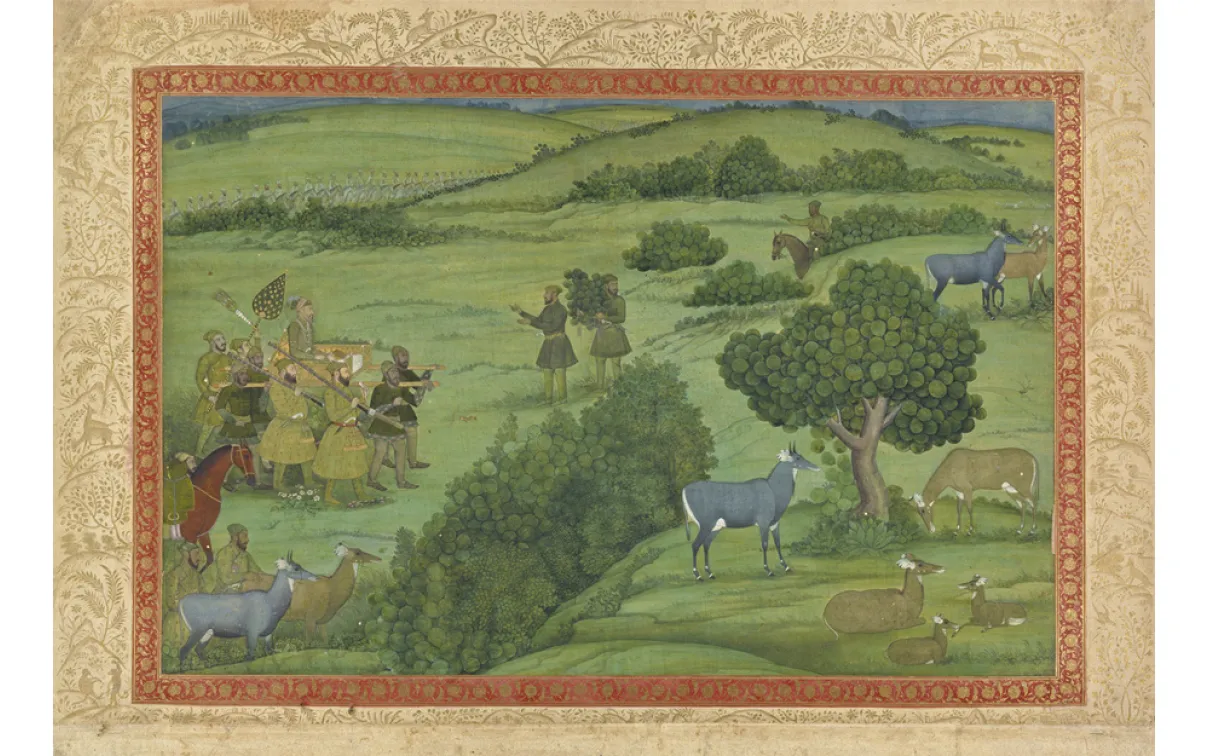The Natural World in South Asian Painting
Published
Categories
Blog Post
These works are on view in the Sir Christopher Ondaatje South Asian Gallery.
Paintings from the Indian subcontinent are made with natural vegetable and mineral pigments on paper and thus are light sensitive, requiring regular rotation in a gallery space. The most recent installation focuses on the theme of the natural world, that is, scenes that take place outdoors, in a natural setting.
In Indian painting, nature, or the countryside, is a space of possibilities—where spiritual retreats, leisure activities, romantic encounters, and tests of skill take place. It is also often considered the abode of the gods, where divine beings go about human-like activities. Elements of nature in these paintings are executed with wondrous detail and skill by masterful artists. The natural world, in the tradition of Indian painting, is as important as the figures who inhabit it.
This stunning page showing a Mughal emperor at leisure is part of the famous St. Petersburg Album featuring paintings and specimens of Persian calligraphy—the latter, present on the back of this page. Based on the guns held by his attendants, this is a scene of the Emperor hunting, one of the few important portraits in his later years.
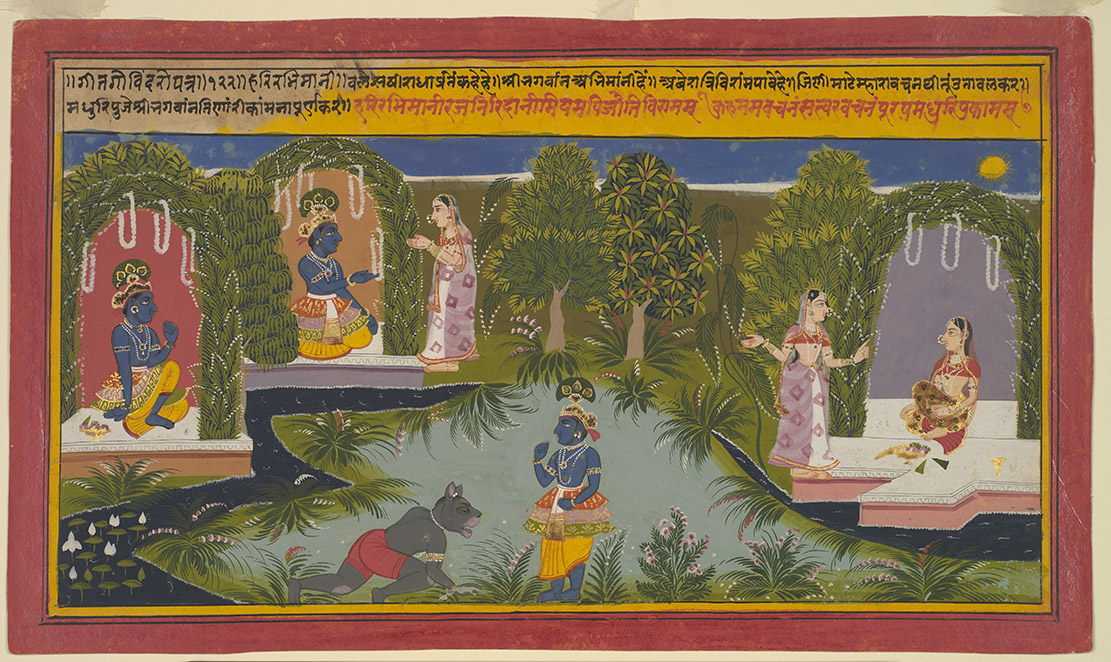
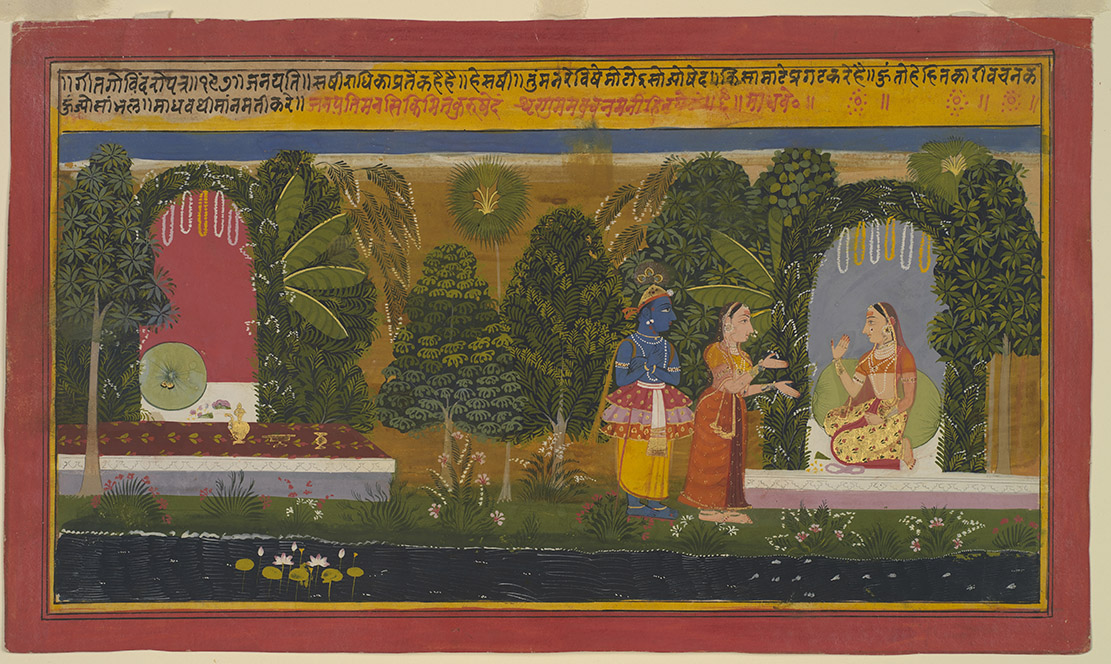
These paintings are from a dispersed manuscript called the "Mewar Gita Govinda,” completed in 1714 in honour of Mewar king Sangram Singh II, under the supervision of Rupaji Bhatt. It recounts the relationship between Hindu god Krishna and gopis (female cow herders) and one special gopi, Radha. In these paintings, Krishna is depicted with blue skin and wearing a crown with a peacock feather. He is shown multiple times in keeping with conventions of Indian painting reflecting multiple scenes of one story within a single frame. Here, the scenes take place amidst lush trees, vines, and garlands, where a female messenger goes from Radha to Krishna to deliver news of Radha's thoughts of her beloved. Krishna’s love of Radha is meant to be a metaphor for the human soul’s allegiance to the divine.
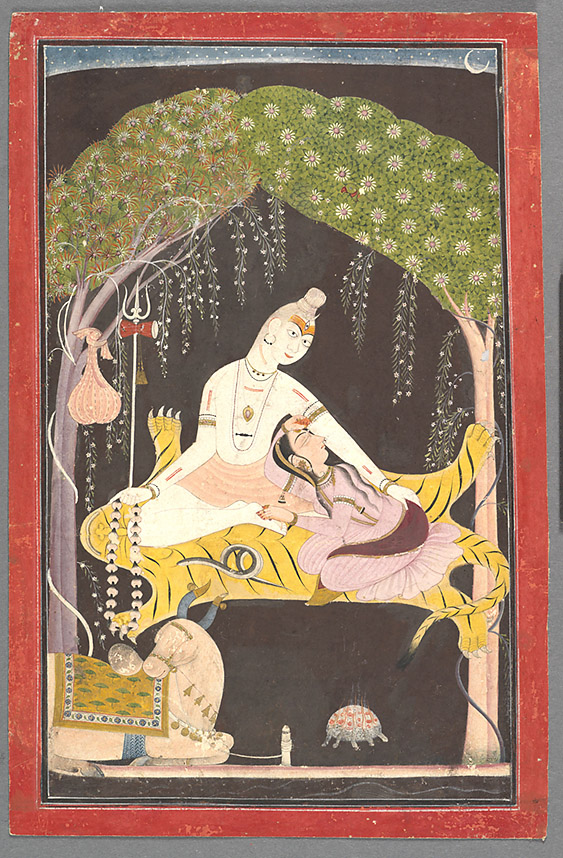
Here, Hindu God Shiva lovingly wraps his arm around his sleeping wife/consort Parvati. Set in a grove of trees with animal vehicle (vahana) Nandi, he holds the trident with double-sided drum. In these works, the painter tries to reconcile the fearsome image of the ascetic god with the sensual, human concept of his role as husband and patriarch.
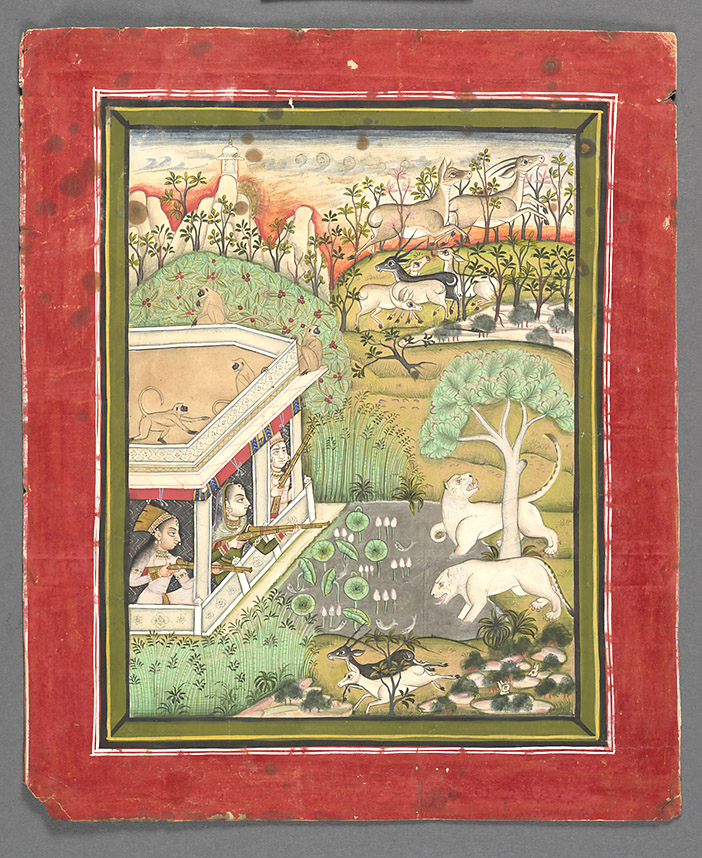
This rare image shows ladies hunting. While often considered a masculine activity, the ladies pictured here demonstrated the often active roles women played in the royal courts, engaging in activities such as patronage of buildings and arts, military competency, and hunting as an elite leisure activity.

